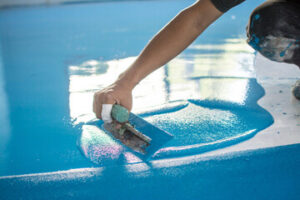Whether you want to swap out some hardware, update the backsplash, or add a whole new kitchen island, there are a few things to remember before you start your remodel. First, clear out the space. As Marie Kondo would suggest, “Donate or dump anything that doesn’t spark joy.”
Then, connect with a remodeling professional. Contact J&R Construction now!

A kitchen remodel is a significant investment, and it’s important to determine an appropriate budget and stick with it. According to the National Kitchen and Bath Association (NKBA), homeowners should aim to spend about 15-20% of their home’s value on a remodel.
Creating a realistic kitchen remodeling budget starts with thorough planning and understanding how each project element will impact costs. The most significant expenses are typically labor and materials. Labor costs are often the highest when dealing with complex structural changes or adding or relocating plumbing or electrical work. Getting multiple quotes from contractors can help save on labor expenses.
Another big expense is the cost of new materials. While you can find some budget-friendly options, higher-end materials like quartz countertops or natural marble can quickly add up. It’s often wise to focus on splurging on key design elements and keeping other areas of the kitchen simple and functional.
Finally, you’ll want to factor in permit fees and other unexpected expenses. Structural modifications and changes to existing electrical or plumbing will likely require permits. Upgrading to energy-efficient appliances will have an upfront cost but can save you money on utilities in the long run.
While you can save on some aspects of your kitchen remodel by doing the work yourself, most major renovations will still require professional assistance from a general contractor and other qualified professionals. Demolition, painting, installing hardware/lighting and tiling backsplashes are some easy DIY tasks that can lower overall project costs.
Another thing to keep in mind is the need for a contingency fund. There are bound to be surprises during a renovation, whether it’s finding rotted wood or outdated wiring. A good rule of thumb is to leave at least 10% of your total budget for unplanned expenses.
If you’re financing your kitchen remodel, be sure to research loan options and compare interest rates to make the best decision for your financial situation. You can also consider a home equity line of credit, which allows you to borrow against the equity in your home, reducing your need for cash out-of-pocket.
Layout
The kitchen layout is an important part of the design process since it determines how efficiently the space functions. It also influences how much storage you have, how accessible appliances are, and where you put items like dishware and cookware.
As you decide on a layout, consider your lifestyle and how people use the kitchen. For example, if you entertain guests frequently, an open-concept kitchen with an island is a great way to maximize space and make cooking and dining easier. It’s also a good idea to keep in mind your family’s needs when planning a layout, including any members with mobility issues or allergies.
Kitchen layouts vary, but one thing most have in common is that they should minimize the distance you have to walk while completing kitchen tasks. For example, positioning the sink close to the stove and refrigerator can help you avoid lugging water-filled pots from one end of the kitchen to the other. Adding smart storage solutions, like small-appliance “garages” and pull-out pantry shelves, can free up counter space too. If you have a tight space and can’t fit an island, consider placing the sink in the center with the fridge and oven on either side for efficient work flow.
You might also consider removing a wall to create an open-concept kitchen, which can increase light and give the room a more spacious feel. However, it’s a good idea to check whether the wall is load-bearing before you remove it. If it is, you’ll need to hire a professional to reinforce the structure.
If you’re going to undertake the remodel yourself, it’s a good idea to create a budget before you start. Then, allocate funds to specific elements of the kitchen, such as appliances and cabinetry. Make sure to include a contingency fund for unexpected issues that might arise during the project. This will give you peace of mind and ensure that your renovation stays within its budget.
Materials
The materials you choose will play a big part in the overall look of your kitchen and how well it holds up over time. Your choices will also determine how much maintenance is needed and the cost.
High-quality materials are more expensive, but they often last longer and resist wear and tear better than cheaper options. Plus, premium materials can add a significant boost to your home’s resale value and increase its curb appeal.
Before you start shopping, decide what your goals are for the kitchen remodel. Whether you want to add a dining area, make it more functional, or improve the flow of the space, this will help guide your decisions. It will also determine the type of flooring, countertops and cabinets you need to buy.
Once you’ve narrowed down your preferences, begin researching and comparing costs. Look for discounts and coupons and consider buying used items, like appliances or cabinetry. You can also check with your local salvage yard or Habitat for Humanity to see what they have available for reuse.
Don’t be afraid to ask questions and negotiate prices with contractors. This is the best way to ensure that you’re getting the most bang for your buck. A good relationship with your Kowalske project manager is essential, so be sure to communicate frequently and openly with him or her throughout the remodeling process.
If you’re planning to open up walls, keep in mind that not all walls are load bearing and some may need support from other structures. This could impact the budget if you need to reinforce or replace drywall and other structural components.
Also consider working in adaptable storage elements, such as pull-out pan racks or a lazy susan, that can be easily removed or added to if your needs change. Also consider choosing durable and sustainable materials, such as bamboo, reclaimed wood or recycled counters. These will contribute to a healthier living environment, while saving you money on energy bills over the long term.
Remember that your new kitchen can impact the resale value of your home, so be sure to keep in mind any future potential buyers. You’ll also want to think about how easy it will be for someone else to maintain your home.
Lighting
There are many decisions to make when remodeling a kitchen, but one of the most important is lighting. This is because the amount of light a space has impacts how you feel in the room and also how well you can work.
The first step is to decide why you are doing the renovation. It is important to answer this question before you begin because it will help you determine what features are most essential to your lifestyle. For example, will you be entertaining often? If so, a larger space may be needed to accommodate guests. Or, do you cook a lot? If so, a more spacious and well-equipped kitchen may be in order. Other factors that may influence your decision include the resale value of your home and whether you plan to sell it in the future.
Once you have determined your motivation, the next step is to establish a budget for your kitchen remodeling project. This will help you avoid overspending and ensure that all of the required elements are included in your finished design. It is also important to consider the impact of the renovation on your daily routine and the overall livability of your home.
It is important to include all of the costs associated with a kitchen remodel, including appliances, materials, labor, and miscellaneous expenses. To help you stay within your budget, you should create a detailed cost breakdown of the project and use it as a guide for estimating the total cost of your kitchen renovation.
Once the budget and plans have been finalized, the construction phase of your kitchen remodeling project can begin. This will involve the carpentry crew performing the framing and any wall removal or building necessary to accommodate new cabinetry, an island, or other changes to the layout.
This is a time-consuming task that can be complicated by the need for plumbing and HVAC installation and rerouting. Typically, this stage of the kitchen renovation is best left to professionals who can handle these complex tasks and are licensed to do so by your municipality.






